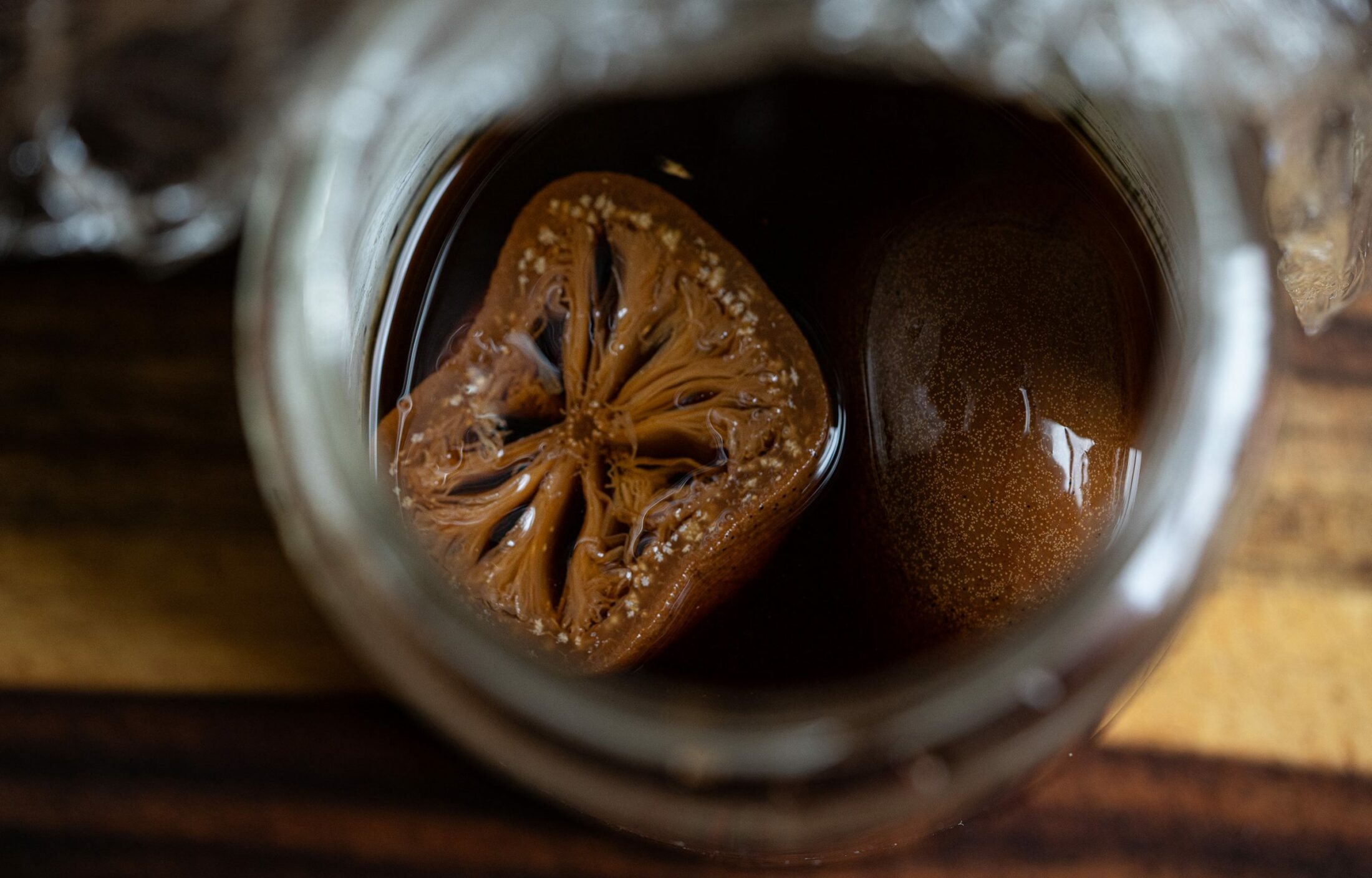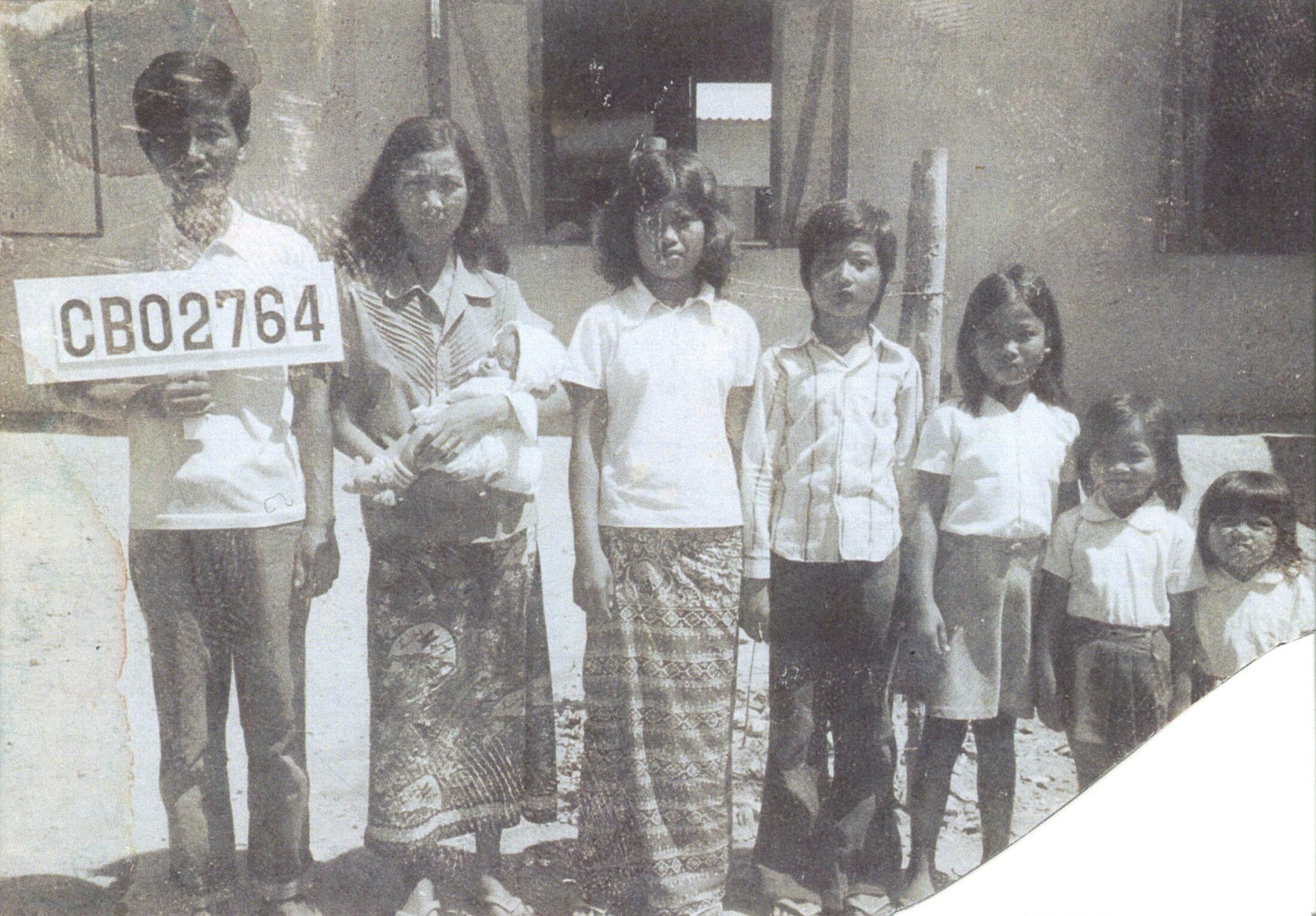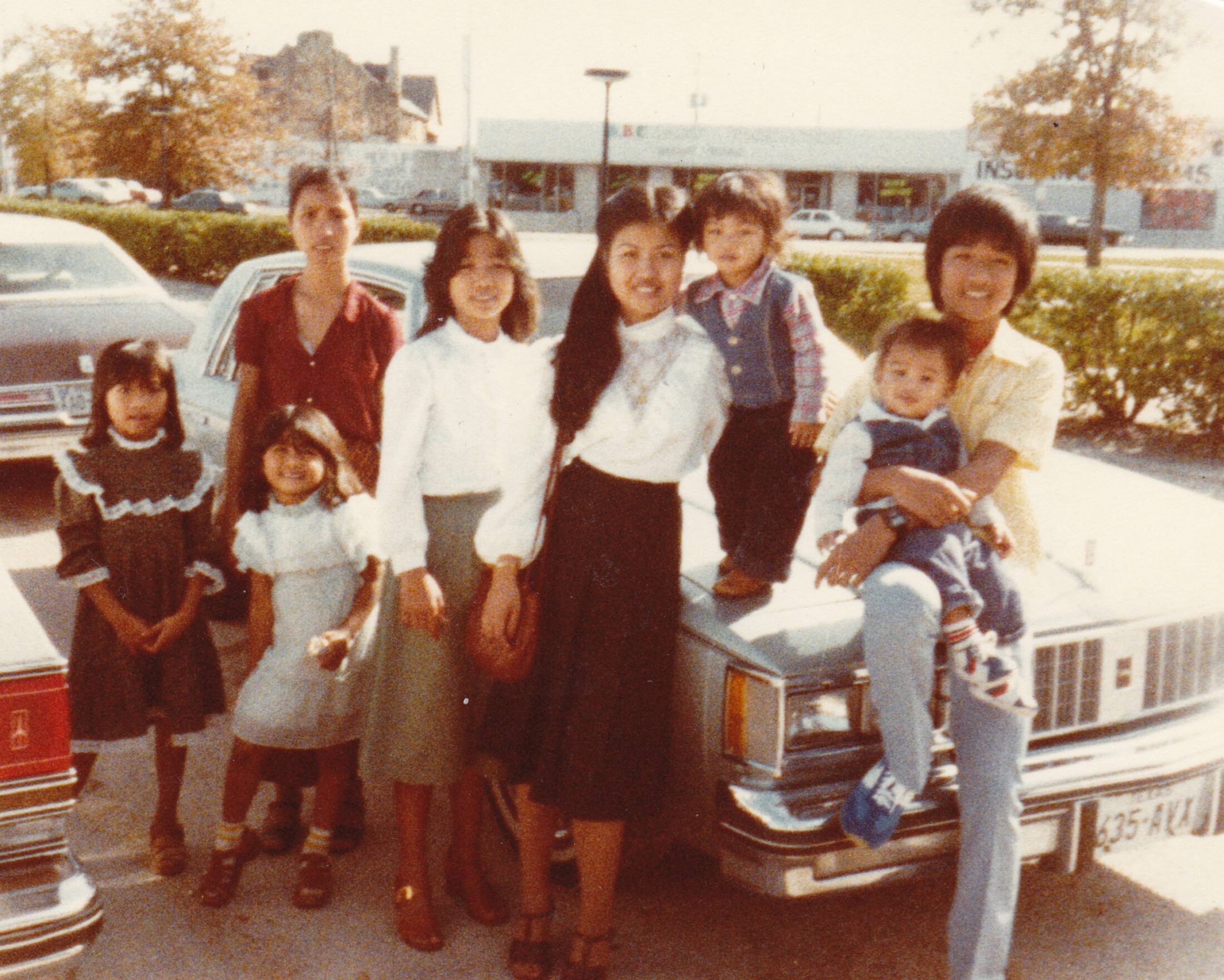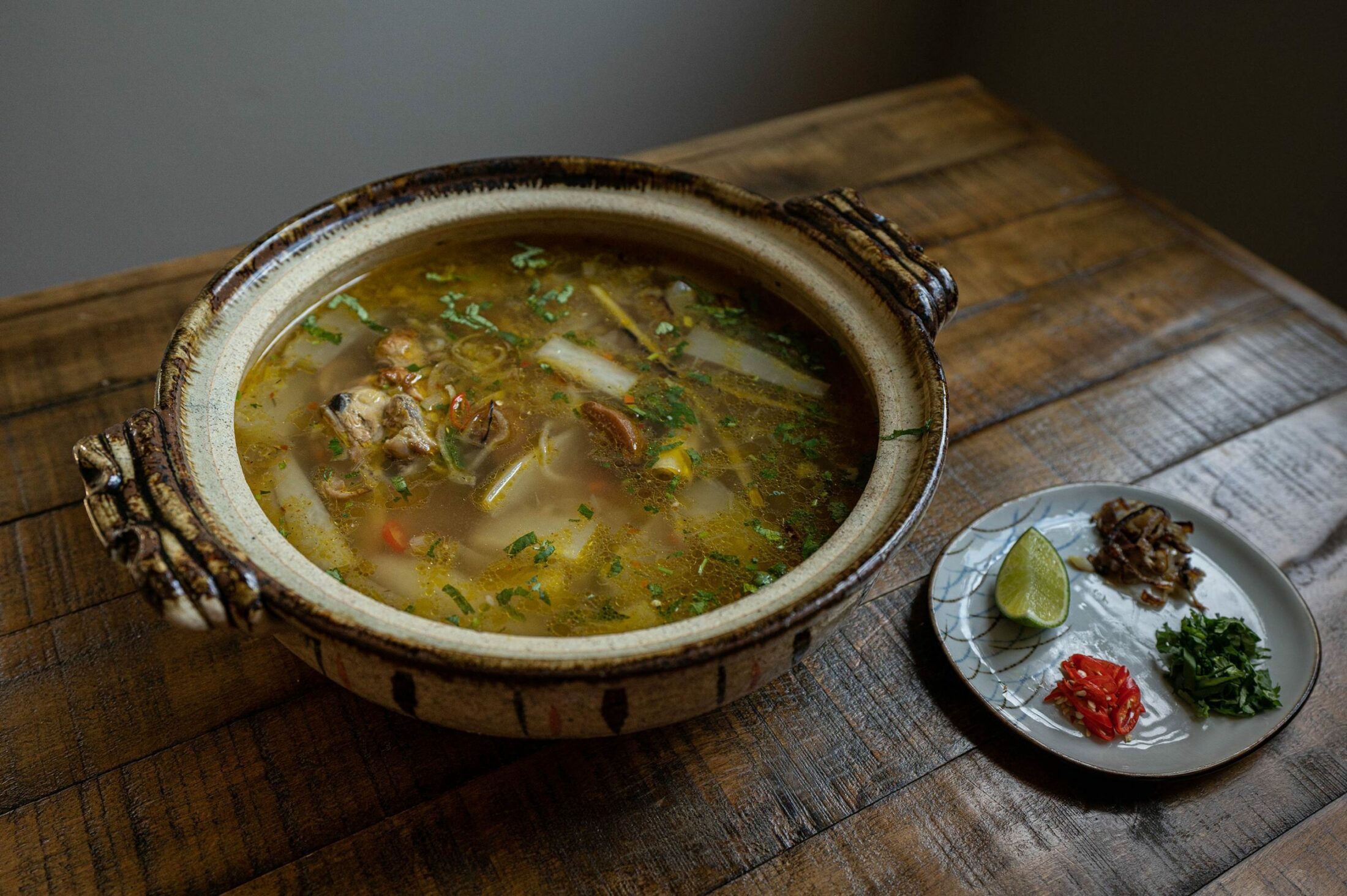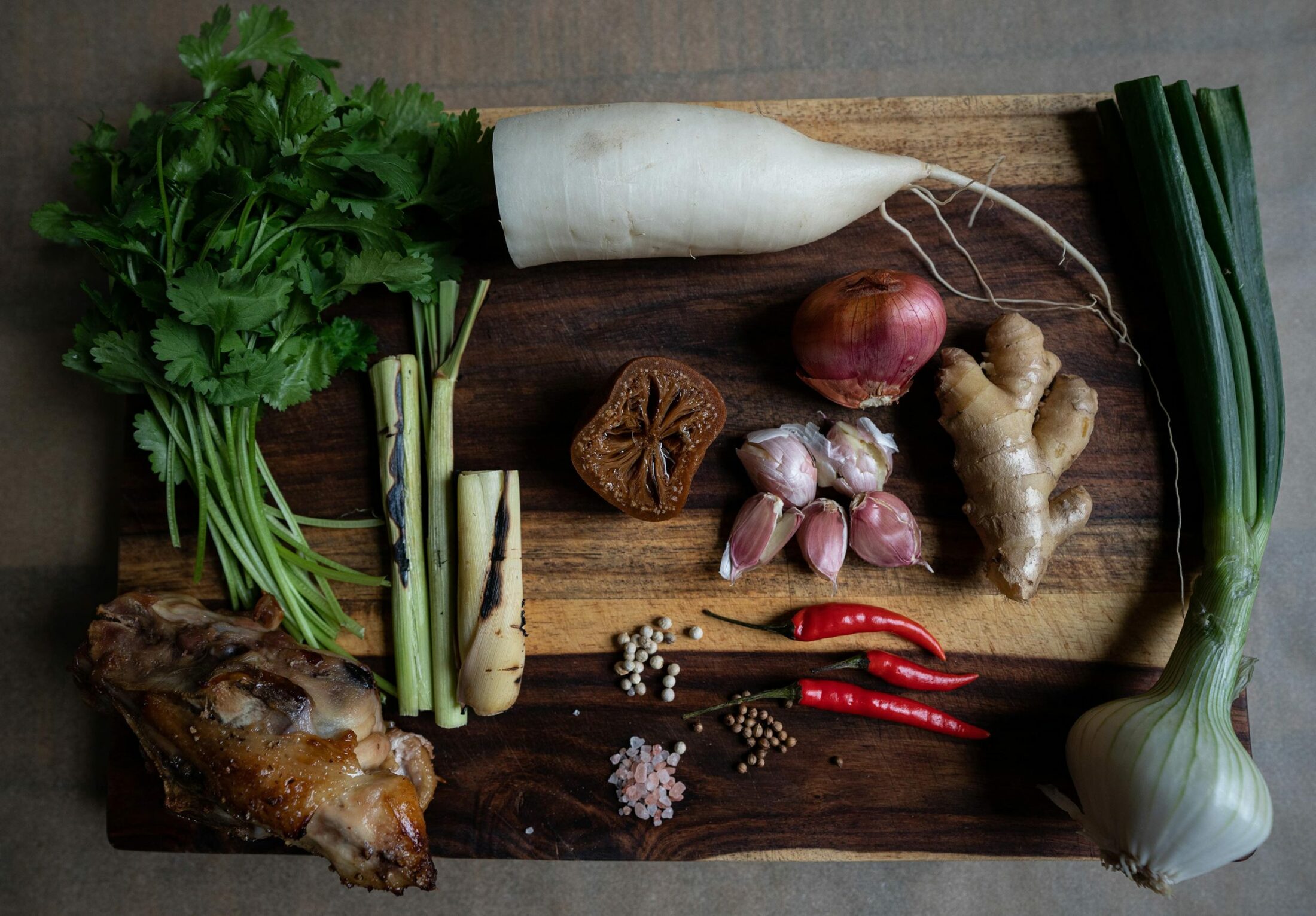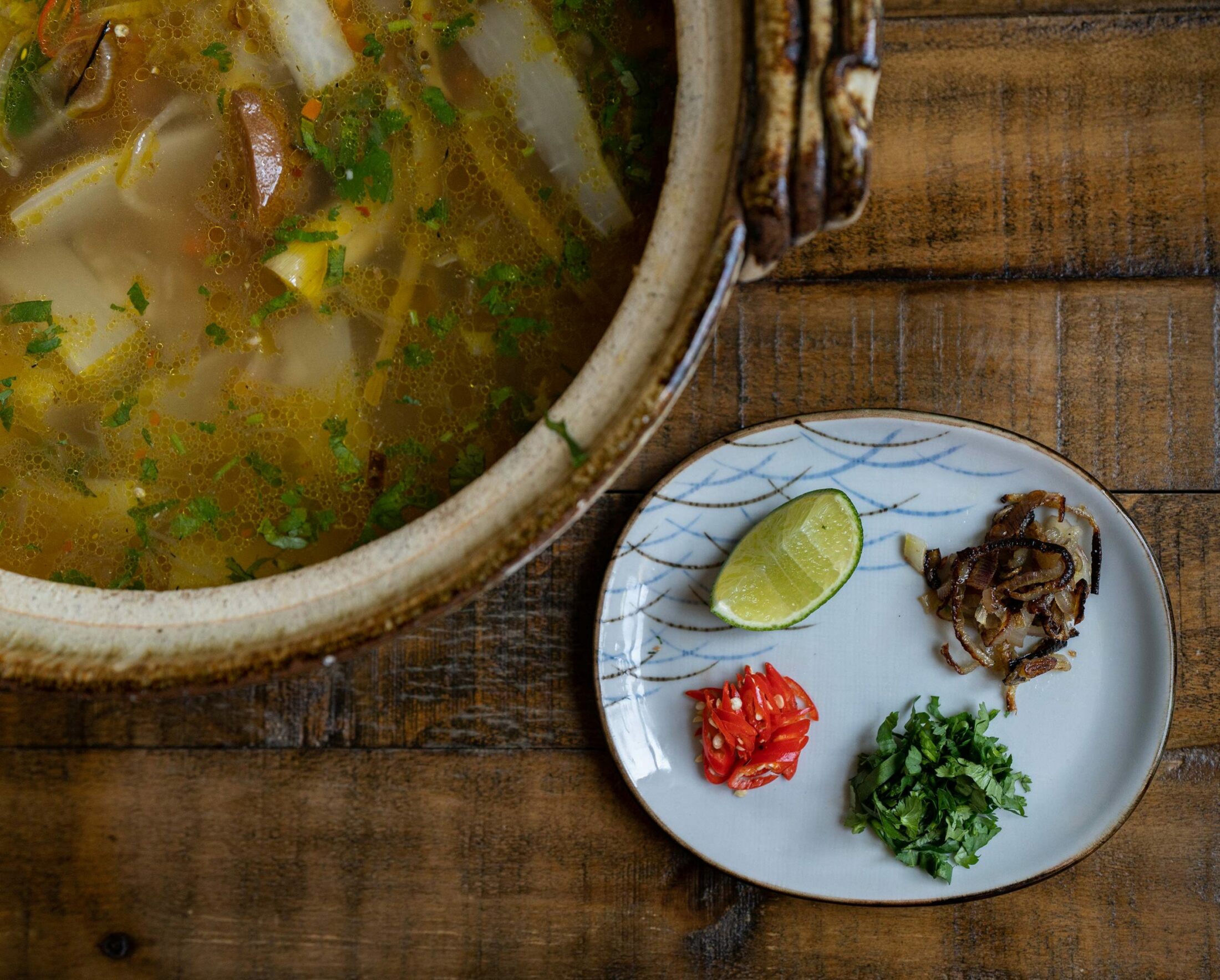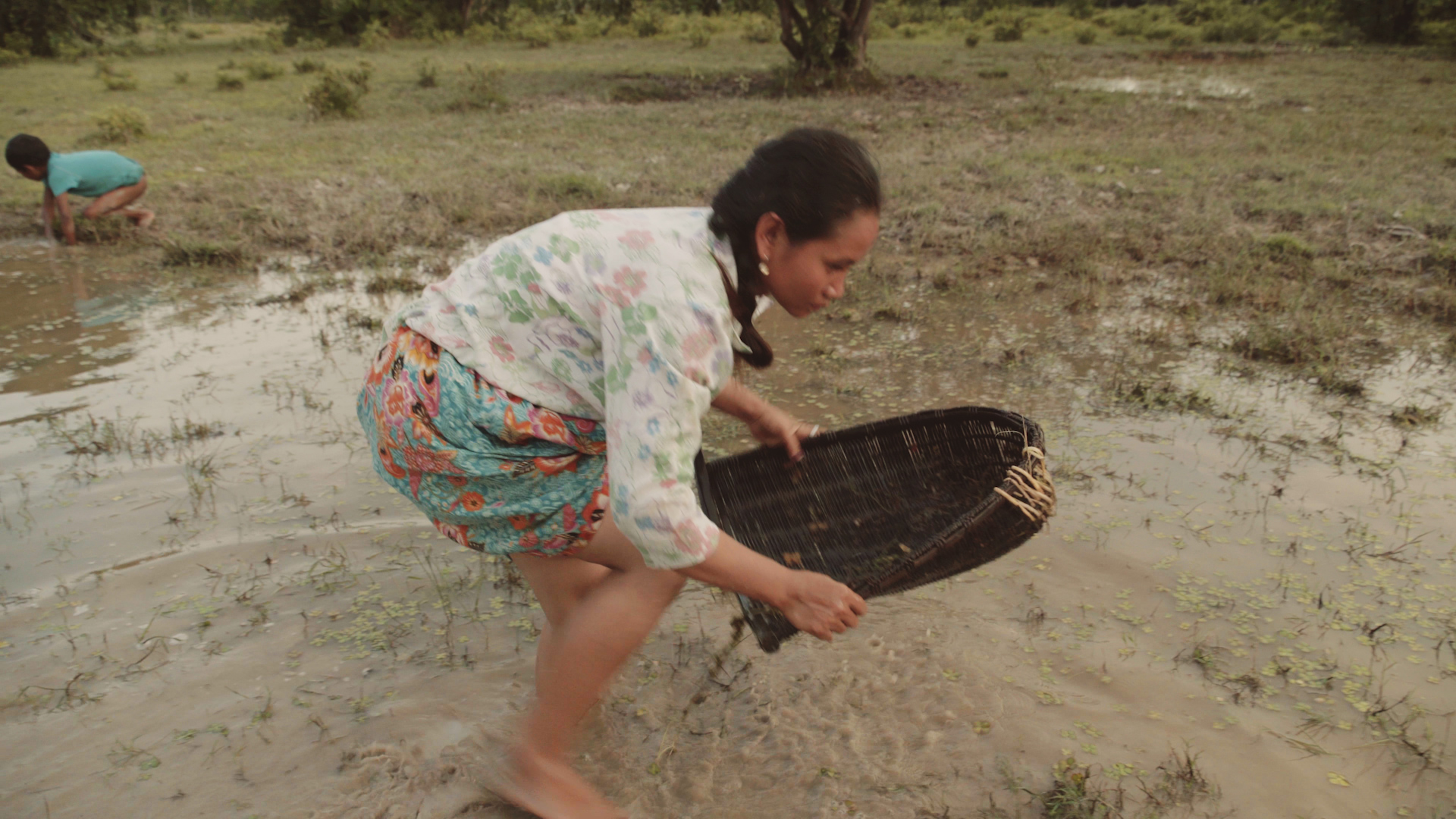Tasting Sunlight
Open storySee, Lat, and their three children forage for fish and mushrooms as they try to hold on to their traditional way of life in the Areng Valley of Cambodia.
Kalyanee Mam is a Cambodian-American filmmaker whose award-winning work is focused on art and advocacy. Her debut documentary feature, A River Changes Course, won the World Cinema Grand Jury Prize for Documentary at the 2013 Sundance Film Festival and the Golden Gate Award for Best Feature Documentary at the San Francisco International Film Festival. Her other works include the documentary shorts Lost World, Fight for Areng Valley, Between Earth & Sky, and Cries of Our Ancestors. She has also worked as a cinematographer and associate producer on the 2011 Oscar-winning documentary Inside Job. She is currently working on a new feature documentary, The Fire and the Bird’s Nest.
During the Khmer Rouge regime in Cambodia, Kalyanee Mam’s mother nourished and sustained her family with umami soups, chicken rice, and fried noodles. Years later, as Kalyanee cooks for her husband and mother-in-law who have fallen ill during the pandemic, she reflects on food as a conduit for healing and love and shares her mother’s recipe for Pickled Lime Soup.
My mother gave us a jar of her pickled limes a few months ago, which I discover hiding in the back of our kitchen cupboard as I consider what to make for dinner this evening. Only two pickled limes remain. I sigh, wondering when I will be able to get more with strict social distancing rules in place. I remove a lime, place it on the cutting board, and cut it in half. I admire the thick syrup that oozes out of the starry compartments that hold the lime together. This sugary syrup is an indication that the lime is pickled and fermented well, a long, drawn-out process that takes my mother six months to complete: a feat only for the patient. I return one half of the lime to the jar. If I ration carefully, I will be able to make three more pots of sour chicken soup with lemongrass, ginger, shallots, star anise, and pickled lime.
In early March, before the shelter-in-place orders, my husband David became sick with coronavirus-like symptoms: a cough, a sore throat, and fever. A few days afterwards, his 81-year-old mother, who has been living with us for the past year, came down with the same symptoms, except her fever rose to 102 degrees, a frightening temperature for an elderly person who is also undergoing cancer treatment. We took her to urgent care. Both David and his mother were placed in isolation for over six hours, until they were informed by a relieved doctor that she had the flu and just needed to go home and “shake it off.” For the next six weeks, both David and his mom were bedridden, unable to shake off their exhaustion or uneasiness, as news of COVID-19 dominated the headlines and airwaves. A virus that seemed, earlier this year, to affect only distant countries was now standing at our doorstep. I canceled an upcoming trip to an environmental film festival in Washington, DC, which was later called off. Before anyone advised us to shelter in place, we observed our own lockdown.
David drove me to our local grocer in the neighborhood. Wearing a mask and gloves, I went inside alone. I filled the shopping cart with the most basic essentials—rice, legumes, flour, whole grains, root vegetables, kabocha pumpkin, butternut squash, avocados, bone marrow and chicken feet, pears, nuts, chocolate chips, butter, and two gigantic six-pound cabbages, which we immediately sliced up and turned into sauerkraut. For a month I stopped all of my work so I could cook and care for David and his mother. I vigorously and lovingly churned out soups—lentil, black bean, pumpkin, daal—all spiced with fresh bay leaves that our neighbor offered us on one of our walks down the street. I baked whole wheat, barley, and rye bread that we smothered with butter, homemade pesto, and sprouted chickpea hummus. Our neighbor Sharon came back from Mexico only weeks earlier with a kefir mother, which she shared with us, and I started making fresh milk kefir every day to help bolster our guts. With every meal we share a salad of arugula, mustard greens, and kale fresh from the garden beds that we built and installed along the sidewalk in front of our house last year. My sisters in Stockton, the East Bay, and Dallas are doing the same for their families: making their own versions of soups, gumbos, and health tonics out of ginger, turmeric, carrot, celery, cilantro, lemon, cayenne pepper, and honey, fusing our Cambodian and American culinary heritages.
In the face of a pandemic, the first thing that came to all our minds was food and how we could nourish, nurture, and heal our bodies and the bodies of the people we love.
Our efforts to care for our families remind me of my mother and the nourishment and care she lavished on us throughout our childhood. She made it possible for us to survive the Khmer Rouge regime. She nourished us even as we fled to refugee camps just over the border in Thailand. And when we eventually immigrated to the United States, she provided us with good and healthy foods.
During the Khmer Rouge regime, a socialist-communist regime which lasted from 1975 to 1979, an entire society was destroyed overnight. Markets and banks were demolished, schools and hospitals were torn down, families were forcibly removed from their homes and evacuated from city centers to the countryside to labor for Angkar, or the “Organization.” All symbols of civilization—acts of religion, tradition, and culture, including music, dance, and theater—were decimated. Nearly two million people, almost a quarter of Cambodia’s population at the time, died from either malnourishment, starvation, or ruthless carnage.
Children were separated from their parents, husbands from their wives, nuclear families from their extended families and communities, to ensure that Angkar had the complete and undivided loyalty of its citizens. Our families were forced at gunpoint to leave our homes, with no notice. My eldest siblings, Sophaline and Makkara, who were only thirteen and twelve at the time, were placed in work cooperatives for young boys and girls (សហប្រតិបត្តិការកុមារ, kong komar). They herded water buffalo and cattle and carried dirt to build canals. My sisters Kunthear and Phalkun stayed with our mother, who was placed in a separate cooperative for married women with children (សហករណ៍ស្ត្រី, kong strei). My father left his pregnant wife and family and risked his life to seek a safer place for our escape. He could not return to fetch us until after I was already born, more than half a year later. For my sister Kunthear, those months felt like a lifetime, with little food and long hours spent waiting for my mother to return home from work.
Every day we were each allotted only a bowl of thin rice porridge to eat. In the evening, after the day’s work was done, my mother collected our bowls and poured all of the porridge into a pot, adding more water and a vegetable called ផ្ទីបន្លែ (pti banla), or amaranth, which grew like a weed and is a highly nutritious source of fiber and vitamins, including iron and protein. This we shared, as our collective ration. My mother ensured that the youngest children had the most. She often gave herself the least. Under the Khmer Rouge regime, we were not allowed to grow and harvest our own food or even to forage for wild foods in the forest. All land and all foods belonged to Angkar. Taking from Angkar was considered “stealing,” often punishable by imprisonment or death.
My mother resisted and so did my elder brother and sister.
One day, on their way to work in the cooperative, Sophaline and Makkara snuck into the forest to dig wild potatoes. Deep in the wetlands they foraged for snails and frogs. They hid their cache along the road to pick up later and bring back to my mother. She cut up the potatoes, laid them out to dry, and then crushed them into a flour. She mixed the flour with water, shaped them into small buns, and then stuffed them with chopped and minced snails and frogs, which she then steamed and served, hot and fresh. The juiciness of the filling complimented the fluffiness of the bun. Traditionally made of rice and tapioca flour and stuffed with minced pork, carrots, celery, and egg, these buns are called នំប៉ាវ (nom pao).
With a thin and lithe body, it was easy for my brother to sneak around and find things to “steal.” When the Khmer Rouge soldiers butchered cattle for their own consumption, he would sneak in and snatch a piece of cattle fat and hide it in his pocket. With this fat, my mother made a stew called ខ (kaw). Kaw is traditionally made with pork, beef or fish, palm sugar, caramelized shallots, and star anise. Lacking palm sugar, she squeezed juice from oranges my brother stole from the trees that grew in the camp and boiled the juice until only a thick and sugary syrup remained. With this syrup, beef fat, and the eel my brother caught in the river, my mother made a delicious, citrusy stew.
Months passed and our family had no idea if our father was dead or alive. How would we survive without him? As the only male in the family, my brother Makkara became our main provider. While my mother was pregnant with me, he decided he would pick a jackfruit for her, knowing she needed the extra nutrients—risking his life to make sure that I would have enough breastmilk. A tall jackfruit tree stood along the side of the road a couple of miles from the camp. On the tree was a large jackfruit, dangling promiscuously from the branch, every day growing larger and riper, taunting my brother with the challenge of picking such an enormous and unattainable fruit. In the evening twilight, as my brother was returning from herding water buffalo, he climbed the jackfruit tree. Slowly and methodically, he climbed, using all his strength to pull himself up the tree. Extending his short arms, he reached up and with a small, sharp knife sliced the stem that attached the fruit to the tree. The jackfruit was too large for him to hold on to. He had to make a choice. Either drop the jackfruit or risk falling down himself.
A young Khmer Rouge soldier, not much older than my brother, rushed to see what had happened. He saw the jackfruit on the ground, the stem finely sliced, and my brother trembling and clinging to the tree. “Did you do this?” he asked. “No,” my brother answered. “I was just looking for the buffalo I was herding.” “Aren’t you a bit far from the herd?” he asked again. That night Khmer Rouge soldiers dragged him away to be “re-educated.” They tied his left hand to an ox cart and climbed aboard, forcing him to pull it for two miles while carrying the heavy jackfruit on his right shoulder. We did not see him again until days later, when he was brought back, tortured but alive.
Kalyanee Mam’s family in a refugee camp in Chonburi, Thailand, 1980. Her father is holding their family identification card number for immigration to the United States.
Photo taken by the UNHCR.
In January 1979, Vietnamese troops invaded Cambodia and quickly destroyed most of the Khmer Rouge forces. Thousands of families saw this as an opportunity to flee, including our own. My four siblings filed in a single line behind my mother, who carried me in her arms. My father walked several feet ahead of us, clearing the way through thick jungle infested with landmines, to the border of Cambodia and Thailand. When we reached the border, Thai soldiers were waiting with large trucks. They herded us and others like cattle onto the trucks and drove us right back, dumping us across the border in an unfathomably dangerous place. They warned us not to return again. When the soldiers left, we stood up and walked defiantly to the border we had just come from. Facing the soldiers in Thailand was better than returning to the hell we had just left. Again, Thai soldiers sent us back. Only on our third try did we succeed in finally crossing over. There we were met with trucks filled not with hostile Thai soldiers but with life-saving volunteer workers handing out sacks full of flour. My mother grabbed a sack, and we made our camp for the night. She mixed the flour with water, fashioned the dough into loaves, and inserted sticks into them. Before the rain could settle in, my father skillfully built a fire near our campsite, and my mother baked us piping hot bread.
We lived for nearly two years in various refugee camps at the southeastern border of Thailand. With nearly 200,000 people living in camps along the border, access to good food and clean water was limited. My mother saw this as an opportunity. She made chicken rice and thin rice noodles fried in pork fat, covered with bean sprouts, basil, mint, cabbages, scallions, and cilantro, drenched in her special sweet and garlicky fish sauce and sprinkled with toasted crushed peanuts. With my sister Kunthear, who was nine years old at the time, she walked around the camp vending bowls of chicken rice and fresh fried noodles. People told her they had never tasted such delicious rice and noodles before—soft, yet crispy, and so rich with flavor. With the sales from the rice and noodle bowls, my mother saved at least $1,000, which my parents stashed away in the form of jewelry sewn into the seams of clothing.
Supported by the International Rescue Committee, we immigrated to Houston, Texas, and my father quickly found a job working at a mapping company called City Map Company. All nine of us shared a four-bedroom house with seven other Cambodian families. Every week, my mother and father went to a large Mexican store in town, where the fruits and vegetables were fresh, prices were low, and people were kind, and we loaded the car with boxes filled with fresh food. At that time, a large box of apples or pears cost only $1.50. My mother wouldn’t touch a box if it cost even $2. She bought an entire chicken for $0.99, which she rationed to last us three meals. With a budget of only $25 or $30 a week, my parents were able to feed us all well.
With our rice and noodle money and another $1,000 we’d saved up, we bought our first American car, a shiny blue Chevy Chevelle, which invited the wrath of other Texans who accused us of stealing their jobs. Within months, the Chevy was destroyed. The brother of City Map Company’s owner smashed the car with a baseball bat, shouting at my father he didn’t deserve to own a car. My father returned home that night, crestfallen. He and my mother decided soon after that we would move elsewhere to a more safe and welcoming place.
In 1983 when we moved to Stockton, the fruit basket of California, we were welcomed into a culturally rich and diverse community, and fresh fruits and vegetables were even easier to come by. Every Saturday morning my mother visited the local farmers’ market, back when farmers’ markets weren’t simply a pastime but a way of life and food was food. She called it ផ្សារស្ពាន (p’saa s’bpee-un), or the bridge market, because it was located underneath a bridge. The farmers came from all different ethnic backgrounds—Hmong, Cambodian, Mexican, Lao—and the vegetables they offered were just as exotic and varied: bitter melon, winter melon, wax gourd, daikon, eggplant, napa cabbage, kabocha pumpkin, chili peppers, galangal, lemongrass, ginger. These were our household staples. Every weekend we gathered, seated on a mat laid out on the floor, to enjoy my mother’s creations—a hot pot of steaming sour soup with tamarind and herbs (សម្លម៉ាជូរគ្រឿង, somlaw machu kreung), one large baked fish served with enormous platters of fresh vegetables and various types of mint and basil, and my mother’s dipping sauce made with minced fermented fish (ប្រហុក, prahok), pounded lemongrass, chilis, shallots, fresh-squeezed limes, and crushed peanuts.
My mother reminds me, though, that it was difficult to get us young children to eat these foods, foods which helped connect her to her homeland and which she desperately wanted to connect us with. We just wanted to fit in here, in America, and we believed that part of becoming American meant eating American food. To cater to our desires, she bought frozen, microwavable burritos, for only a quarter each. She also bought us hot pocket apple pies wrapped in colorful green and red wax paper, ten for a dollar. And as we watched our Saturday morning cartoons, we munched on sugar-loaded Captain Crunch, Cocoa Puffs, and Fruit Loops doused with milk. Whenever I went on a field trip at school, I was the only child munching on a Cambodian sandwich, which my mother made with roasted pork, pickled julienned carrots and daikon, cilantro, and jalapeno peppers on a toasted French baguette smothered with mayonnaise and chili sauce, while drinking from a dark brown carton of Hershey’s chocolate milk. My mother was trying to find a balance between our old homeland and our new homeland with its sugary, fatty, and processed foods. It was only when I was in high school, she told me, that I realized these foods were neither nourishing nor sustaining and began to crave her soups and bowls of rice and fried noodles. And it was not until I left home for college and began living on my own, bereft of the nourishment and love of my mother, that I truly appreciated her care.
Kalyanee Mam and her family in front of an Oldsmobile Cutlass, their second used car, in Houston, TX, 1982.
Photo taken by her father.
Today as I cook and ladle bowls of my own steaming soup at the table for my convalescent husband and mother-in-law, cut loaves of homemade bread, and stir-fry vegetables with leftover rice, I remember the nourishment my mother gave me and my siblings.
The care my mother provided us extended beyond just our immediate family to include our ancestors as well. With every meal my mother cooked, she would set aside a small bowl to place at the family altar, which was decorated with candles and incense, photographs of our grandparents, and today an enlarged photograph of my father, placed distinctly in the middle. Our ancestors included our grandparents, our great-grandparents, their great-grandparents before them, as well as the spirits of all who have passed away. And although my parents did not express this explicitly, our ancestors also included the អ្នកតា (neak-ta), or the spirit of the land we left behind. Kneeling and prostrating ourselves on the floor, we were taught to pray to our ancestors for protection and strength. By honoring and caring for our ancestors, we also care for ourselves.
What I learned from my mother is that food is care, which is also love. And like food, care and love are not luxuries: they are necessities, the essence of all life and our survival. In the worst of times and in the face of adversity, care thrives. The same instinct that motivates us to stock our pantries, and in the worse cases to hoard toilet paper, also motivates us to care. When our basic human needs are threatened, including our need for certainty, meaning, and purpose, caring emerges to inform us that we are not alone. My mother made food for us not only to feed and nourish our bodies but to feed and nourish her own spirit too. By caring for us, she was also caring for herself.
This was not the case for my father. His identity and worth were connected to his ability to provide for us and protect his family from harm. During the Khmer Rouge regime, he succeeded in saving our lives, leading us safely from war-torn Cambodia to the refugee camps and then from the refugee camps to the United States. When we arrived here, though, everything changed. We came to learn that our value to society depended on how much money we could make, especially for men. My father’s Cambodian education and teaching credentials had no meaning or value here. Being financially insecure in a country where financial security is paramount caused irreparable stress and pain for my father. His displacement was not only physical; it was also psychological. Memories of Cambodia’s war haunted him in ways I could not comprehend. To his last breath, he never returned to Cambodia, afraid of the ghosts he left behind. He was also never at peace, fearful of the demons that haunted him in the new world.
I realize now that things would have been different for my father if he had been able to take care of himself, to care for and nourish his own spirit, to unleash and slay the nightmares that haunted him. Unfortunately, he had no psychological tools, no community to help him understand the source of his depression and unhappiness.
Care and love are not luxuries: they are necessities, the essence of all life and our survival.
During these past weeks, I’ve thrown myself into the role of caregiver, as my mother once did. As I soak and sprout beans and rice, chop onions, carrots, and celery, mince and sauté garlic, knead dough, and bake bread, I am finding certainty, meaning, and purpose in preparing and sharing food and conversation with family, friends, and neighbors. In taking care of my loved ones and making sure they are fed, nourished, healthy, and well, I am also being fed. Time has stopped and nothing feels more important.
Two weeks into our shelter-in-place, I fell off my bike and sprained my ankle. Our neighbor Sharon rushed over with a bandage wrapped in a paper bag. Our neighbor Tracey and our other neighbors across the street, Chris and Dolores, came over with two pairs of crutches. My husband brought pillows so I could keep my foot raised on the couch. Every evening he helped me ice, massage, and bandage my foot. My mother-in-law brought in a bowl of hot water with Epsom salts.
A week later, Sharon texted me: “Poke your head out the window to say hi. We’re in the driveway!” She and our friends, Joy and Jill, were gathered outside with their lawn chairs, six feet apart from one another. One seat was empty. I smiled and hobbled over with my crutches, and we chatted all afternoon, soaking in the warmth of the sun. “This is amazing!” exclaimed Sharon. “Would we ever do this on a normal day?”
My dear friend Mona shared with me a reflection about the anthropologist Margaret Mead and her idea of the first signs of civilization. Early in his career, Dr. Paul Brand, who became an eminent surgeon, attended a lecture given by Mead, which he later documented in his book The Gift of Pain.
“What would you say is the earliest sign of civilization?” she asked, naming a few options. A clay pot? Tools made of iron? The first domesticated plants? “These are all early signs,” she continued, “but here is what I believe to be evidence of the earliest true civilization.”
High above her head she held a human femur, the largest bone in the leg, and pointed to a grossly thickened area where the bone had fractured and solidly healed.
“Such signs of healing are never found among the remains of the earliest, fiercest societies. In their skeletons we find violence: a rib pierced by an arrow, a skull crushed by a club. But this healed bone shows that someone must have cared for the injured person—hunted on his behalf, brought him food, served him at personal sacrifice.”
With Margaret Mead, I believe that this quality of shared pain is central to what it means to be a human being.… And the presence of a caring person can have an actual, measurable effect on pain and on healing.
Civilization begins with care.
My family and I would not have survived without my mother’s food and nourishment and my father’s resilient will to protect us from harm. My ankle would not have healed so quickly without the love and care of my family, neighbors, and community. We fall and others help pick us back up again. We live and thrive through our relationships of care with one another, with our communities, and with nature too.
As I sit and stare at the Japanese maple tree outside our window, the starry leaves connected by a web of limbs and branches, I wonder how different it would’ve been for my father if he’d received the care that he needed to heal and liberate himself from his isolation. I also think of my mother and her pickled limes and the starry compartments that hold these limes together.
Pickled Lime Soup
(adapted from my mother’s traditional recipe)
As I was growing up, meat was rarely the main dish, primarily used as a flavoring for soups, stews, and stir-frys. In this way, my mother was able to feed a family of nine over the course of three meals with only one whole chicken. Most of her soups were made with chicken bones or beef marrow accompanied with an abundance of fresh vegetables, herbs, and spices. Fermented foods like prahok, fish and soy sauce, and pickled limes also lent a unique umami flavor. From my mother’s teachings, I’ve learned to do the same, using only broth made from vegetables and bones to flavor my soups and dishes.
This recipe can be adjusted for a vegetarian option by omitting the chicken pieces and bones along with the fish sauce, adding cubed tofu if desired, and using a vegetarian broth for texture and depth.
Ingredients
For the soup
· 1 chicken back or any miscellaneous chicken pieces/bones. (The heartiness and flavor comes from the chicken, but the essence of this soup comes from the preserved lime.)
· 1 tablespoon of cooking oil
· 5 garlic cloves
· 1 spring onion, finely chopped
· 2 scallions, chopped
· 1 carrot, finely chopped
· 1 celery rib, finely chopped
· ¼ teaspoon each of freshly ground cumin, coriander, and chili flakes
· ½ gallon of water or vegetable stock, as needed
· 1 large daikon radish, peeled and cut into quarters, then eighths, then into 1-inch wedges
· 2 stalks of lemongrass, cut into thirds and flattened with a cleaver or mortar and pestle
· 2 knobs of ginger root, sliced
· 1 teaspoon of fish sauce, if available
· 1 whole pickled lime, cut into quarters
· 1 lemon/lime, freshly squeezed
· Sea salt and black pepper, as needed
· 2 tablespoons of cilantro, freshly chopped
For the garnish
· 1 tablespoon of cooking oil
· 1 shallot, sliced thinly
· 1 tablespoon of cilantro, freshly chopped
· 1 chili or jalapeño pepper, sliced thinly
Preparation
For the soup
Preheat the oven to 400°F (200°C). Clean and rub the chicken with a wedge of lemon or lime. Salt and pepper the chicken and bake for 15 minutes or until slightly brown, not cooked. Reserve the chicken fat for cooking.
In a large Dutch oven or a heavy cooking pot, gently heat the cooking oil and chicken fat. Flatten garlic cloves with a flat knife or cleaver, leaving the skin on. Add garlic cloves and finely chopped spring onions. Cook until translucent and fragrant. Add scallions and finely chopped carrots, celery, cumin, coriander, and chili. Add baked chicken and stir gently. Add water or vegetable broth, then add daikon, lemongrass, ginger, and fish sauce. Finally, stir in the pickled lime.
For a vegetarian option, omit the chicken and use vegetable broth.
Bring the soup to a boil before turning the heat down to a simmer and cooking for one hour. If desired, remove chicken back and bones along with the lemongrass stalks before serving. Add one freshly squeezed lemon or lime. Taste before seasoning with sea salt and black pepper, as the pickled lime will already impart a salty flavor to the soup. Add cilantro and stir.
For the garnish
Heat heavy pan on high heat. Add cooking oil and stir in shallots. Fry until crispy.
Serve soup hot and garnish with crispy shallots, freshly chopped cilantro, and sliced chili or jalapeño pepper.
See, Lat, and their three children forage for fish and mushrooms as they try to hold on to their traditional way of life in the Areng Valley of Cambodia.
